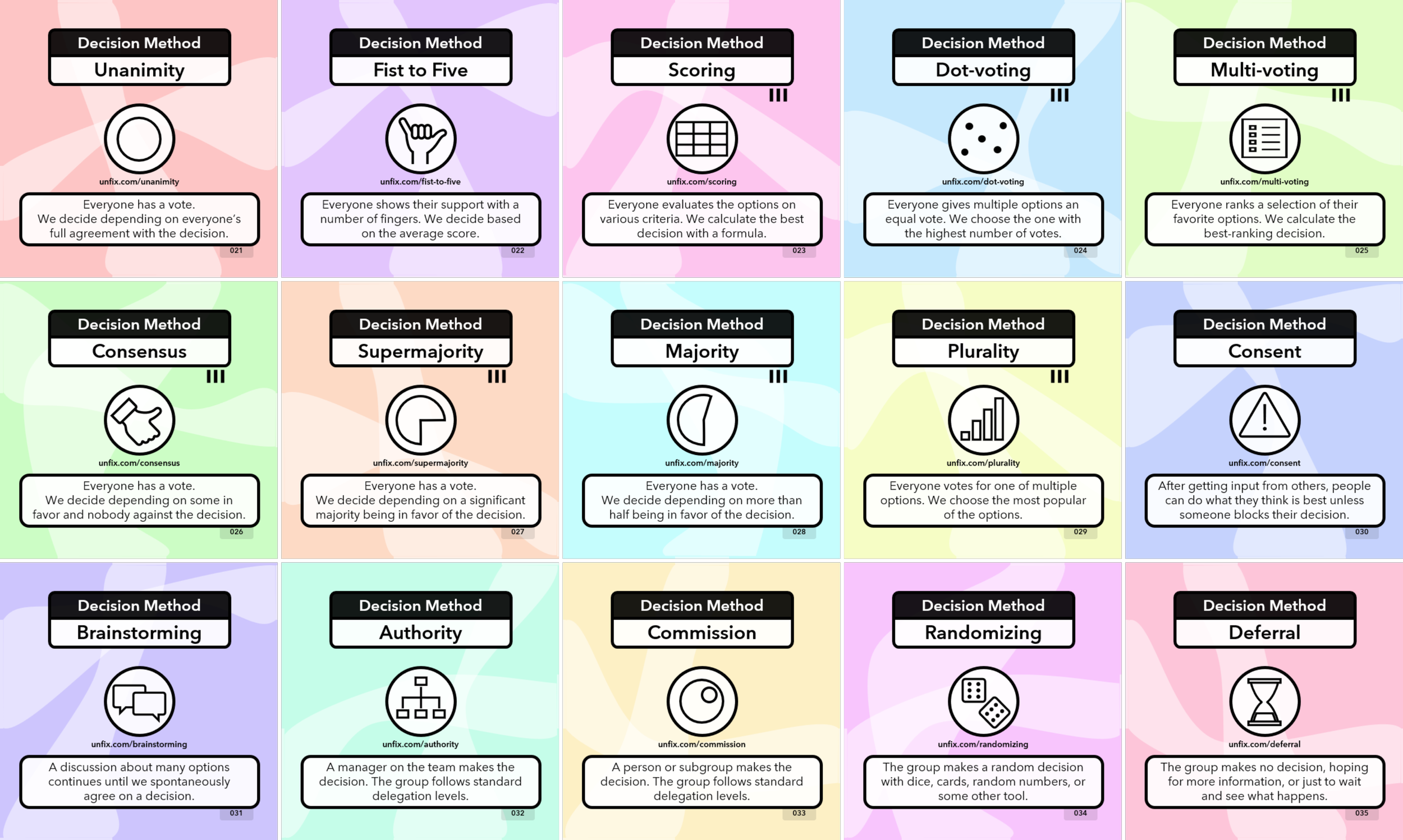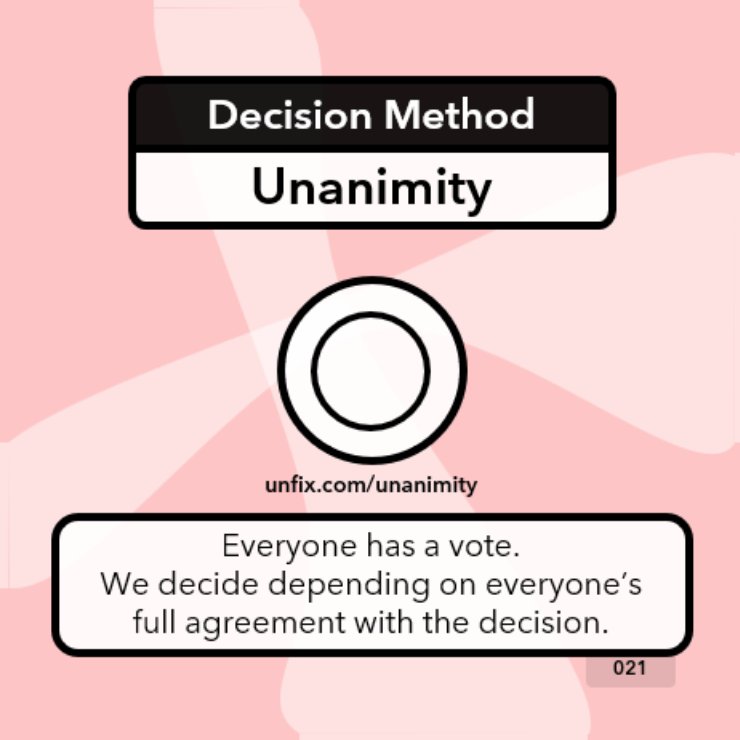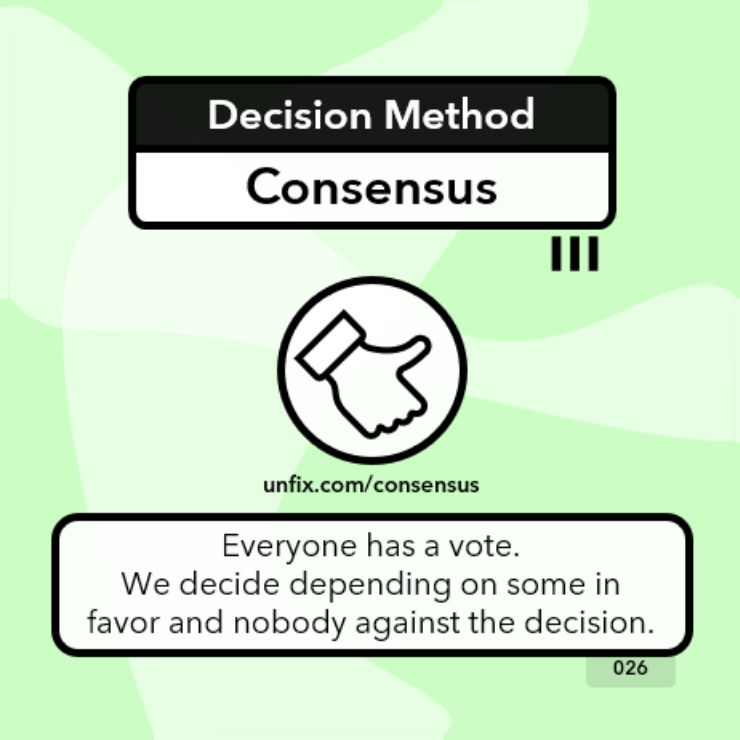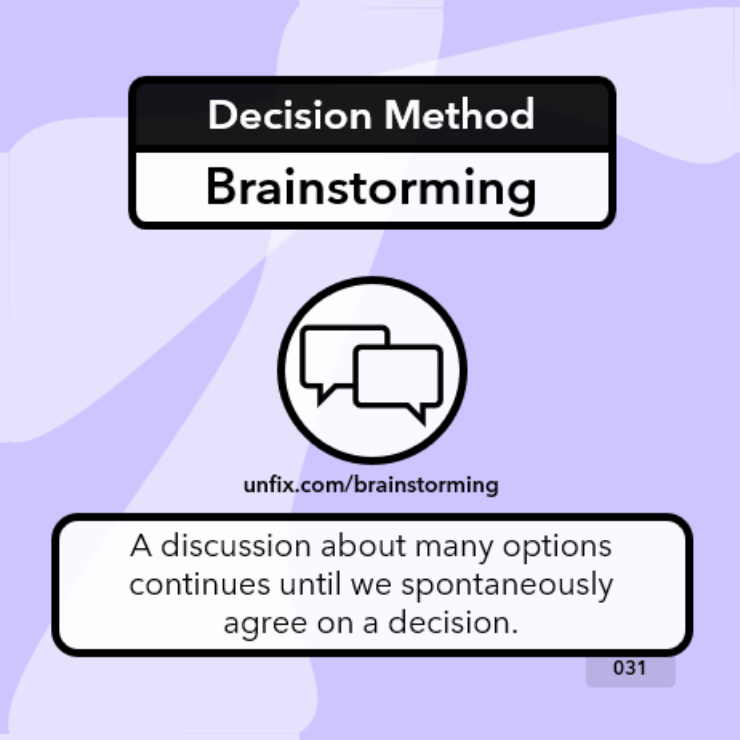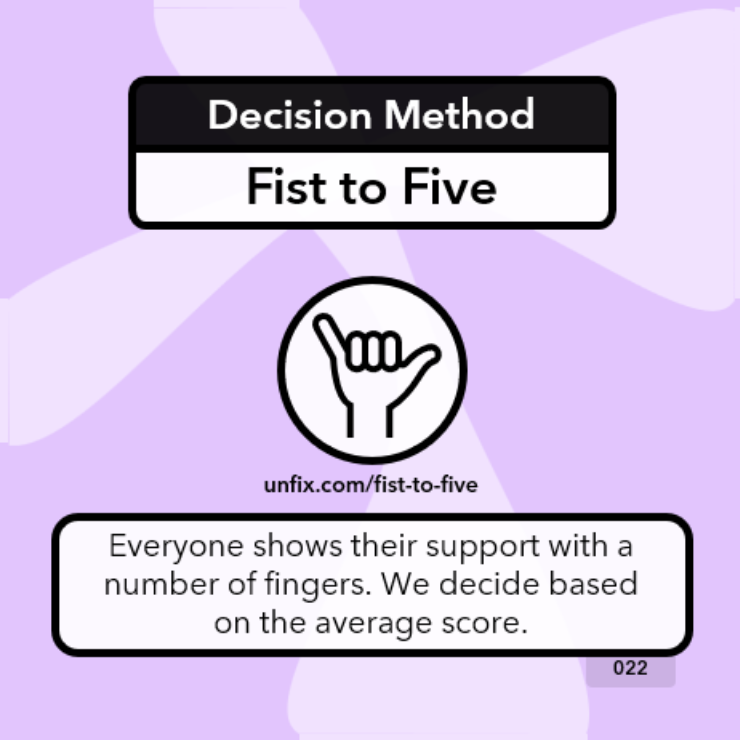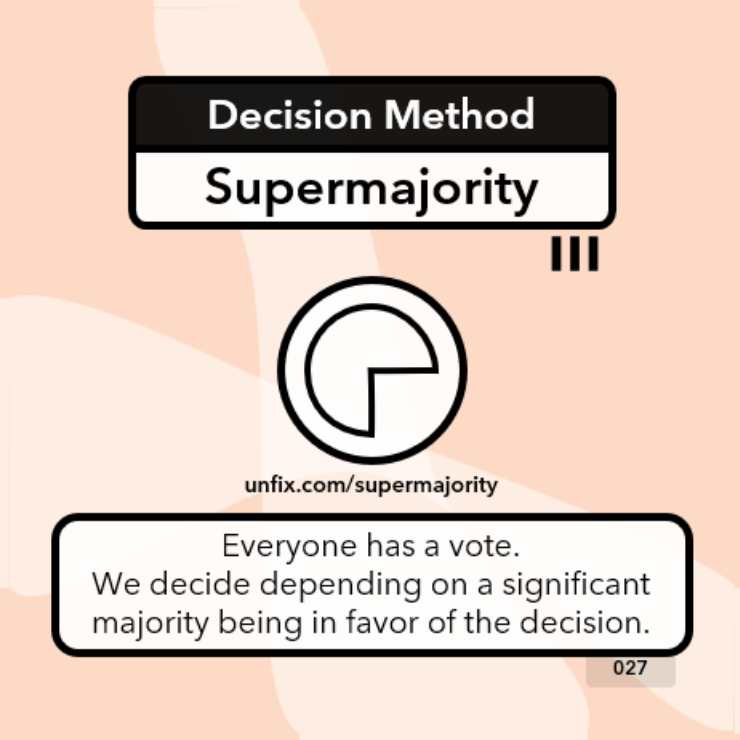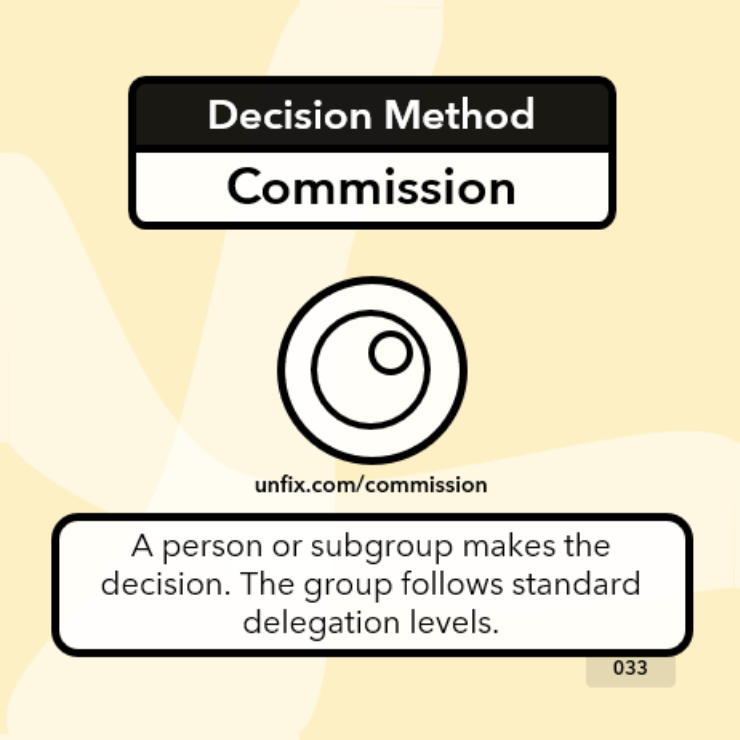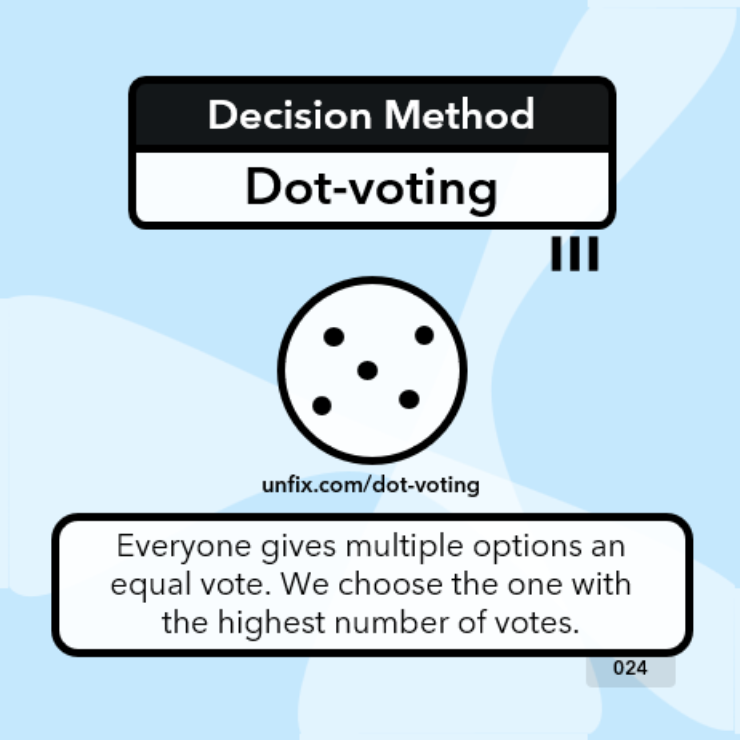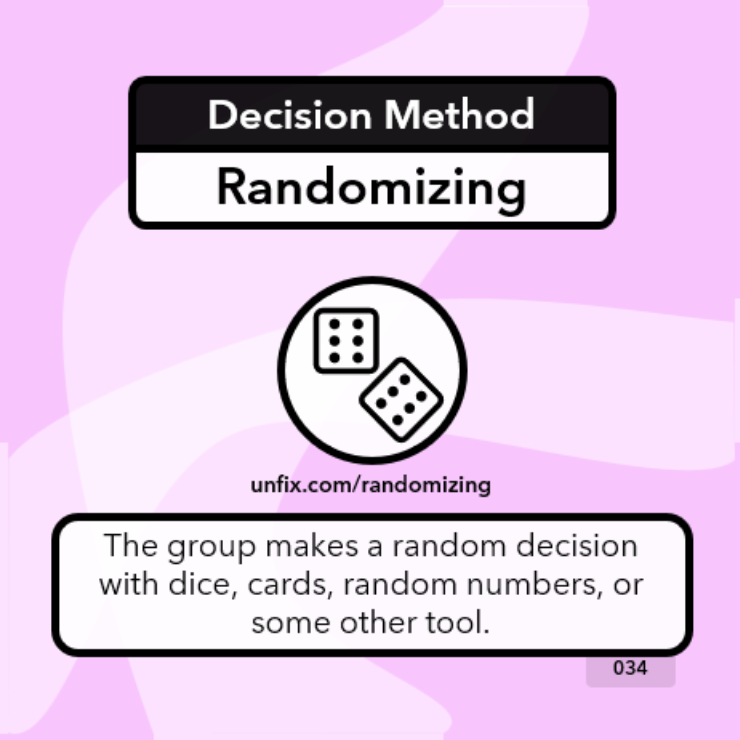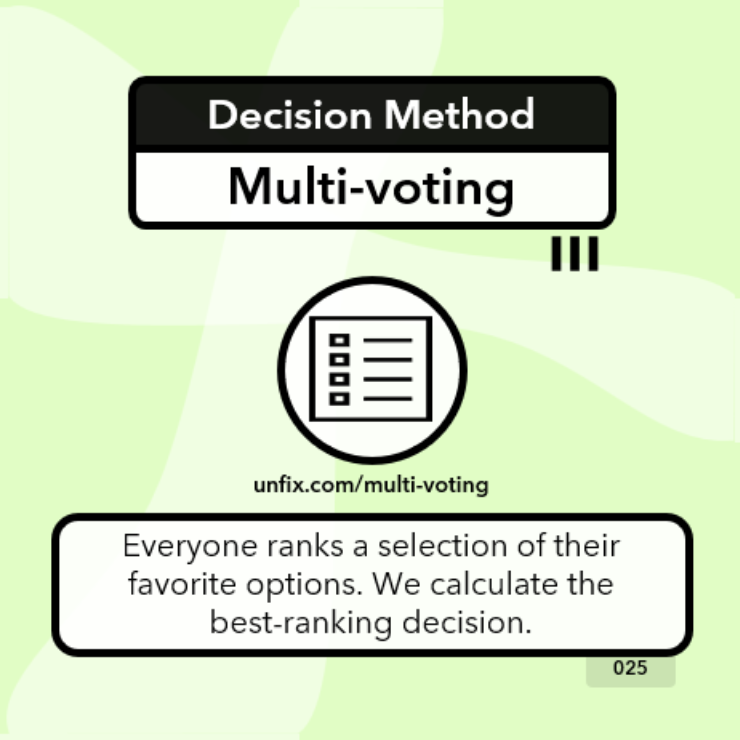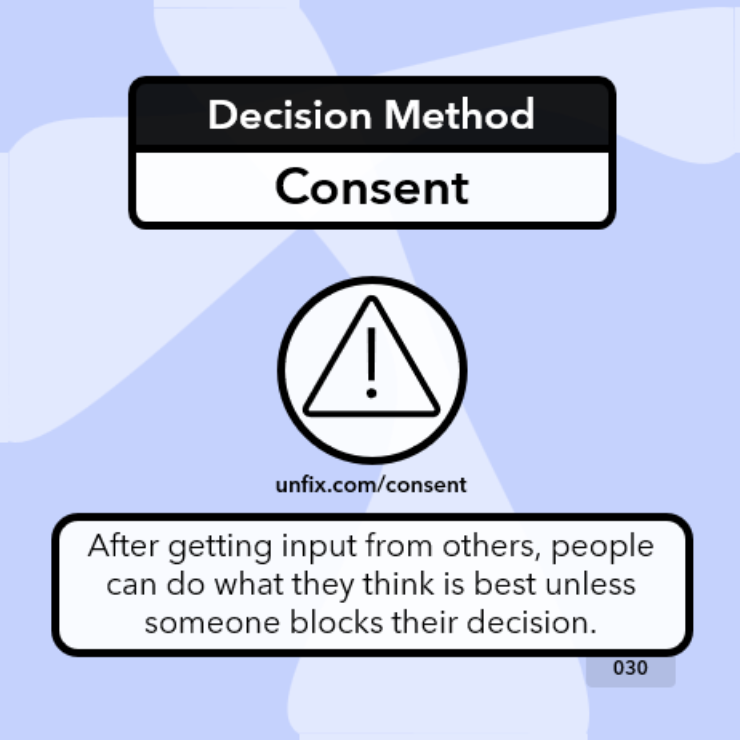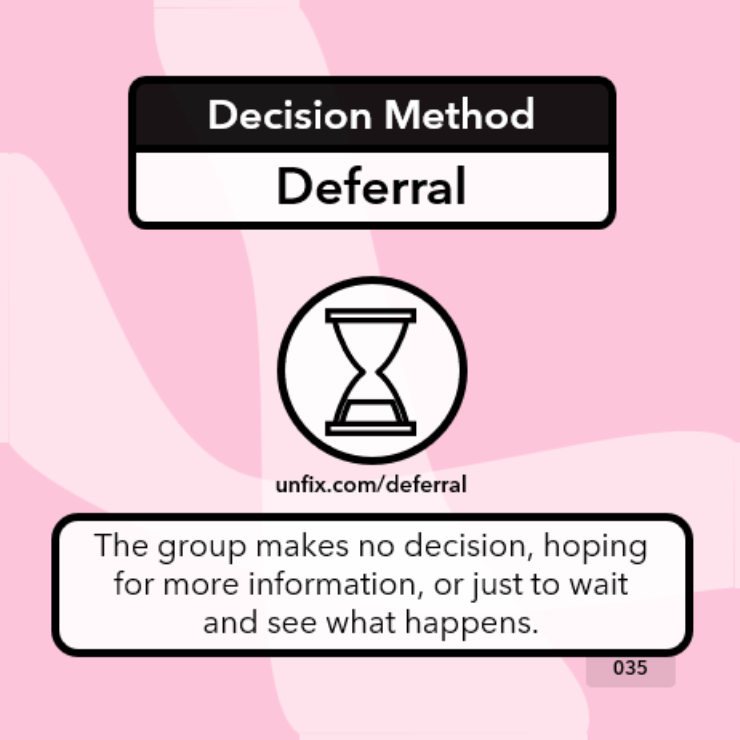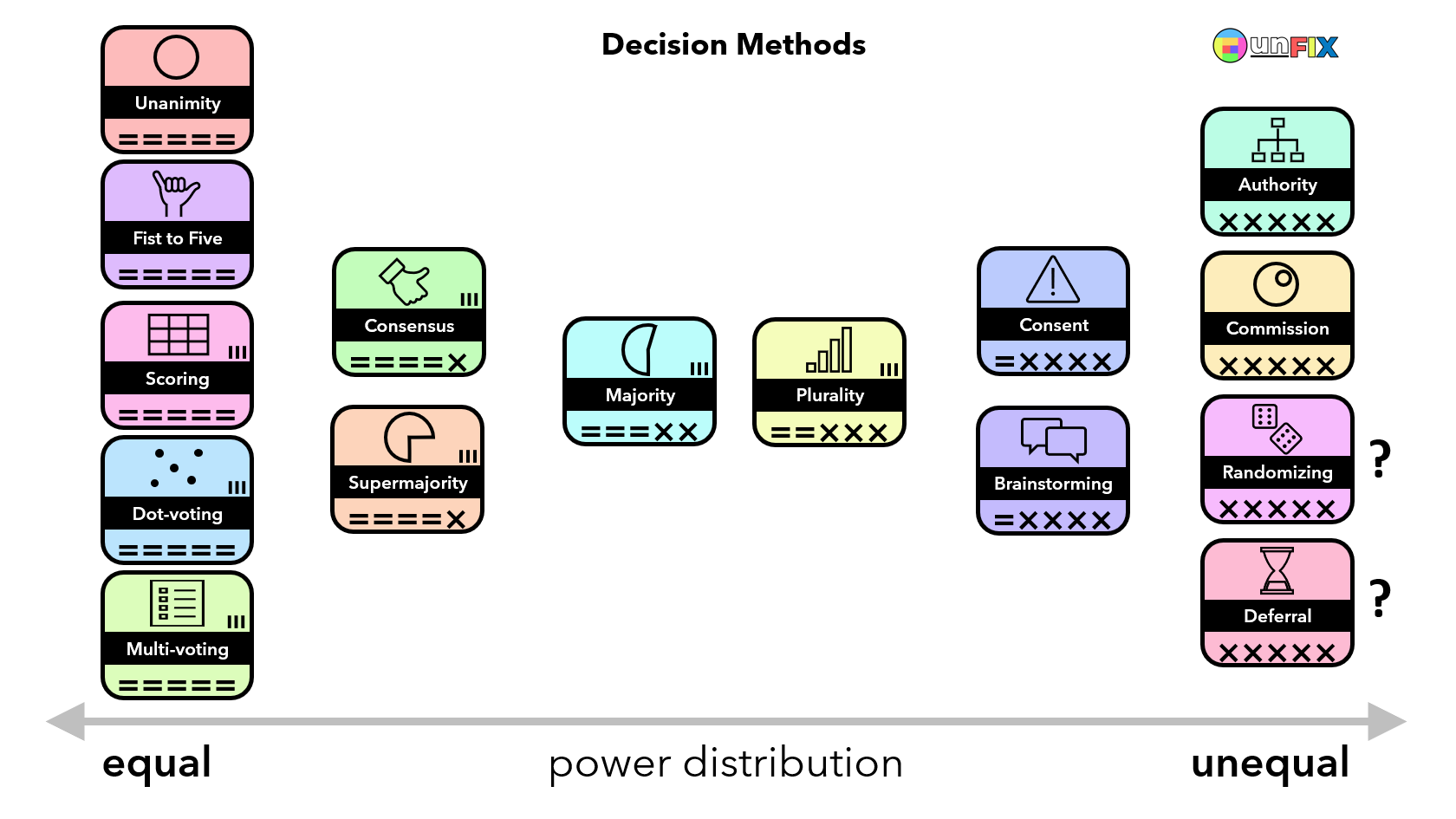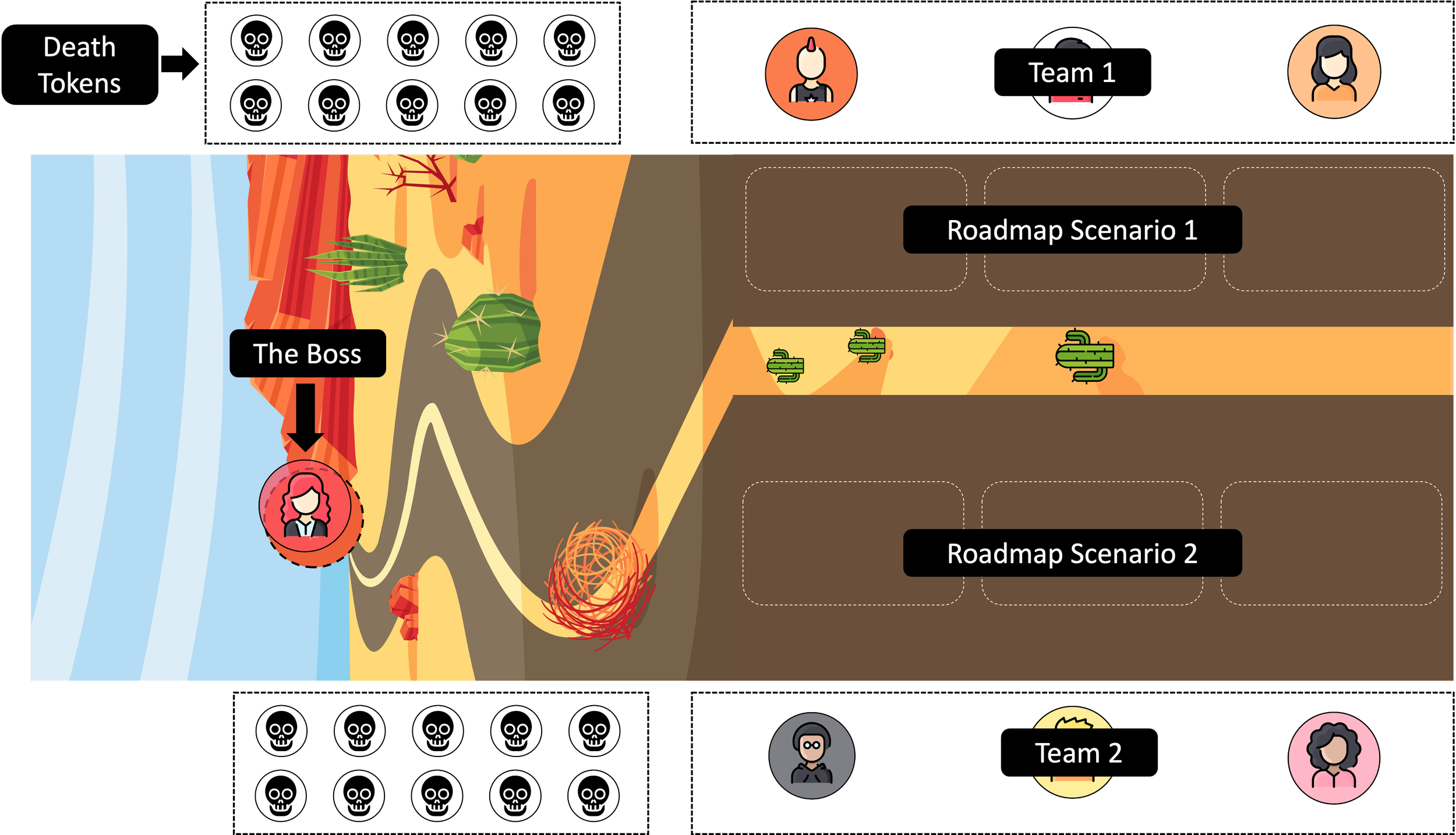
Decision Methods
How does a self-organizing team make decisions together? Should they just talk until they agree? Should everyone get a vote?
Decision Methods: Unanimity • Fist to Five • Scoring • Dot-Voting • Multi-Voting • Consensus • Supermajority • Majority • Plurality • Consent • Brainstorming • Authority • Commission • Randomizing • Deferral
Purpose
Team decision-making is of paramount importance as it harnesses the collective wisdom, diverse perspectives, and complementary skills of individuals toward achieving optimal outcomes.
Entrepreneurial ventures, especially startups, often thrive in their early stages due to the flexibility of their decision-making processes. However, there's a double-edged sword to this approach. While the initial informality can catalyze rapid growth and adaptability, it can also inhibit scalability and consistency in the long run.
What starts as a strength can evolve into a growth-limiting factor if not adequately managed. Informality in decision-making doesn't scale well. It is best to keep decision-making power as close as possible to where the information is (usually in a team). And teams would be wise to understand the different decision-making methods available to them to make their processes a bit less ad hoc and more streamlined.
Notes
In a team, decisions are not simply reliant on a single person's knowledge and judgment but are instead shaped by the amalgamation of ideas, experiences, and expertise from multiple team members. This collaborative approach ensures that various angles are considered, potential biases are mitigated, and innovative solutions are generated. Moreover, team decision-making fosters a sense of ownership and accountability among members, leading to increased commitment and improved implementation of the chosen course of action. By leveraging the power of collaboration, teams can tap into their full potential, tackle complex challenges more effectively, and achieve superior results than could be accomplished by any individual alone.
Rules / Constraints
We have not yet defined rules/constraints here.


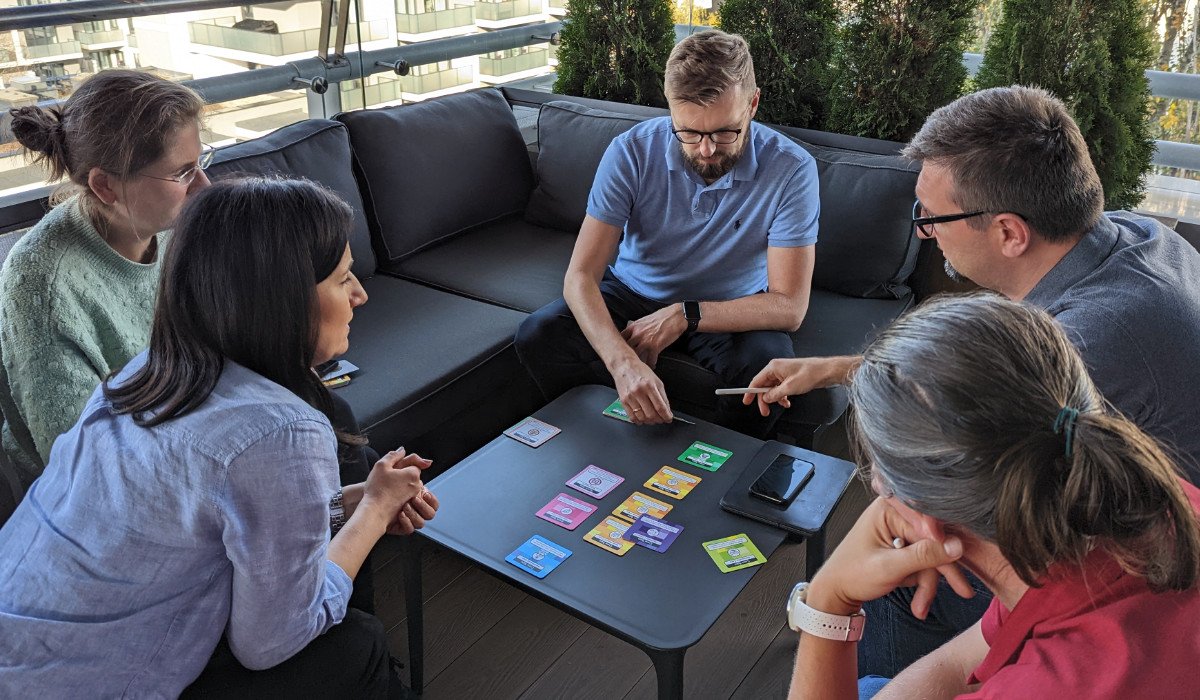

“Sometimes you make the right decision, sometimes you make the decision right.”
(Source: Phil McGraw)

